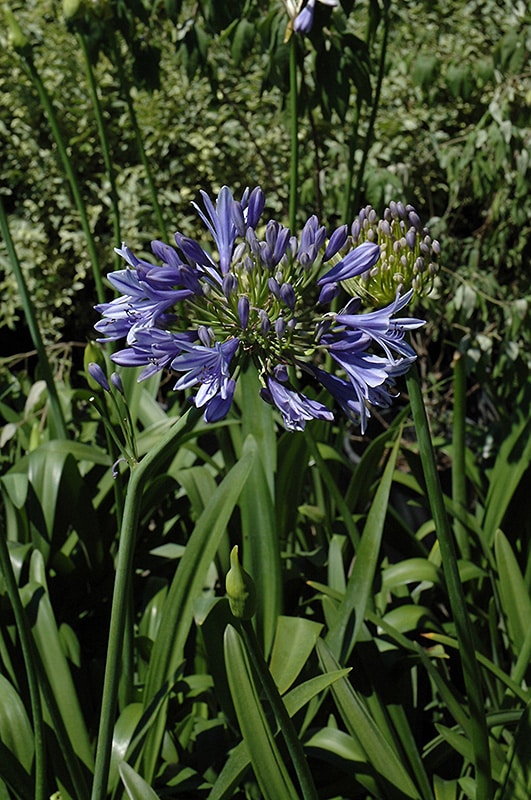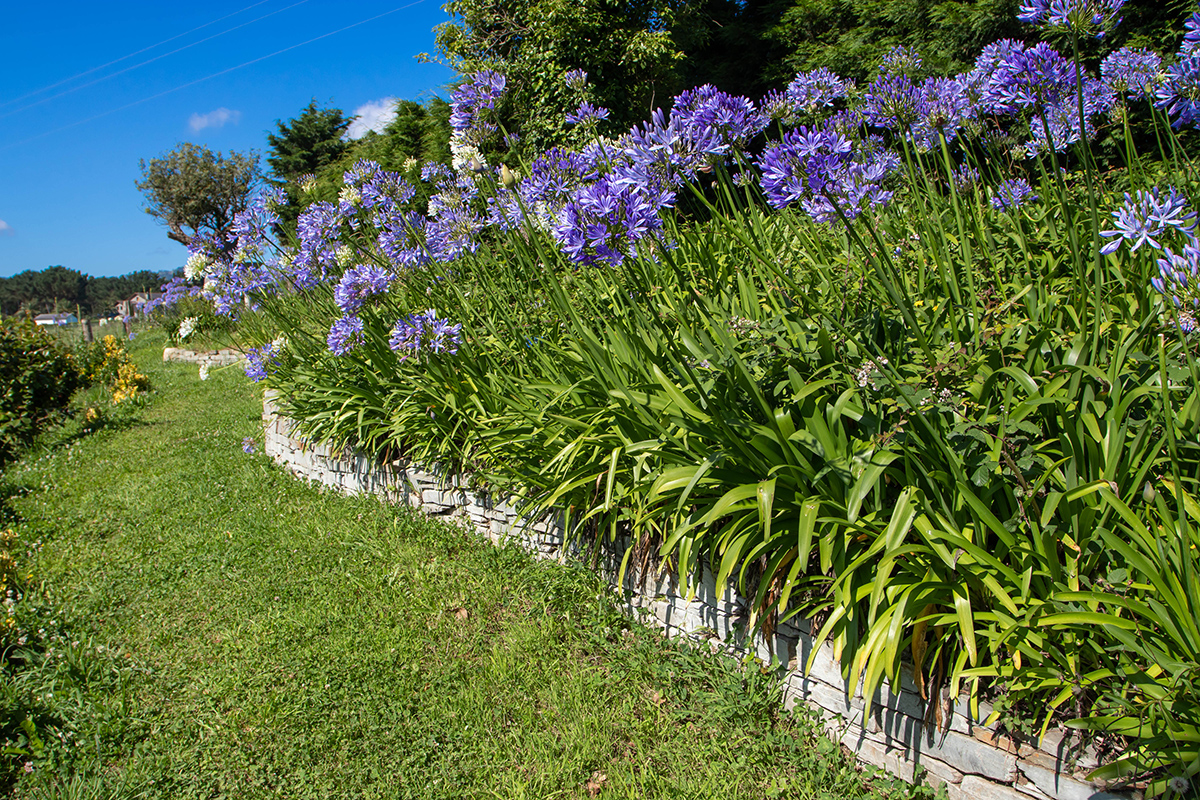Seasonal Agapanthus Care: Getting Ready For Winter Season and Summertime
Seasonal Agapanthus Care: Getting Ready For Winter Season and Summertime
Blog Article
Releasing the Secret to Successful Agapanthus Farming: Tips and Techniques for a Flourishing Garden
In the world of horticulture, cultivating agapanthus effectively requires a tactical method that encompasses numerous aspects of plant treatment. With cautious focus to detail, one can open the tricks to supporting these sensational blooms, bring about a garden that flourishes with elegance and vibrancy. By comprehending the nuances of agapanthus growing, one can produce a setting where these plants thrive and flower generously. In the complying with discussion, we will certainly explore essential pointers and techniques that will certainly direct you in the direction of a thriving agapanthus yard, offering understandings into ideal techniques, dirt conditions, sprinkling techniques, and much more.
Planting Agapanthus: Finest Practices
When planting Agapanthus, correct soil prep work is crucial for guaranteeing effective growth and advancement of these lovely blossoms. Agapanthus, generally referred to as Lily of the Nile or African lily, thrives in well-draining soil with a slightly acidic to neutral pH level - Agapanthus. Before planting, it is vital to amend heavy clay soils with organic matter such as compost or peat moss to enhance water drainage and give important nutrients for the plants
To plant Agapanthus, select a place that gets complete sunshine to partial shade, as this will promote healthy growth and abundant flowering. Dig an opening two times the size of the plant's origin ball and put the Agapanthus at the exact same deepness it was formerly growing. Gently backfill the hole with soil, pressing down firmly to remove any type of air pockets around the roots.
Water the recently planted Agapanthus completely and continue to keep the soil equally wet, specifically during the plant's active expanding period. Agapanthus. Using a balanced fertilizer once a month can further support the plant's growth and flowering. By adhering to these ideal methods for planting Agapanthus, you can create a stunning display of these captivating flowers in your garden
Suitable Soil Issues for Agapanthus
For optimum growth and blooming success of Agapanthus plants, ensuring the dirt problems are optimal is important. Agapanthus prospers in well-draining dirt with a somewhat acidic to neutral pH degree ranging from 6.0 to 7.0. This type of dirt permits sufficient water drain, stopping waterlogging which can cause root rot. To enhance dirt drainage, take into consideration adding raw material such as compost or peat moss when preparing the planting site. Additionally, Agapanthus prefers dirt that is rich in nutrients, so integrating a well balanced fertilizer throughout the expanding season can advertise healthy development and lively flowers.

Watering and Fertilizing Tips
To guarantee healthy development and vibrant blooms, appropriate watering and feeding techniques are crucial for effective Agapanthus growing. Agapanthus plants gain from regular watering, particularly throughout the growing period. It is recommended to water deeply as soon as a week, making sure the soil is moist but not waterlogged. Throughout heat or in pots, more constant watering may be essential to stop the dirt from drying out entirely.
When it pertains to fertilizing Agapanthus, a balanced fertilizer with equal components nitrogen, phosphorus, and potassium can be applied in the spring to promote healthy and balanced growth and flowering. Slow-release fertilizers are perfect for providing nutrients slowly over an extensive period. Avoid over-fertilizing, as this can lead to extreme vegetation development at the cost of flowers.
Furthermore, including raw material like garden compost into the soil can boost nutrient levels and here are the findings boost dirt framework, helping in the total wellness of the Agapanthus plants. By following these watering and feeding tips, gardeners can ensure their Agapanthus plants grow and create spectacular display screens of flowers.
Pruning and Deadheading Methods
Correct pruning and deadheading strategies play a vital duty in preserving the health and appearances of Agapanthus plants, matching the necessary methods of watering and fertilizing for successful farming. Trimming Agapanthus entails eliminating invested blossom heads, yellowing or dead fallen leaves, and overall shaping of the plant to promote much better growth. Deadheading, the procedure of removing discolored flowers, not only enhances the plant's look but additionally urges further flowering.
When deadheading Agapanthus, it is advisable to clip off the blossom stem at the base utilizing sharp, clean shears. This procedure reroutes the plant's energy from seed manufacturing back right into root and vegetation growth, advertising a healthier and extra durable plant. Regular deadheading can expand the growing period of Agapanthus and protect against self-seeding, which can lead to congestion.
In regards to pruning, Agapanthus typically advantages from a light trim after blooming to tidy up the plant and encourage fresh development. Reducing the spent flower stems and removing any kind of dead or damaged vegetation aids keep the plant's vigor and total appearance. However, it is vital to prevent cutting into the crown of the plant, as this can deteriorate its wellness.

Protecting Agapanthus From Vermins and Diseases
Implementing effective pest and illness monitoring strategies is important to securing the health and wellness and vitality of Agapanthus plants in cultivation. One usual pest that influences Agapanthus is the Agapanthus borer, a caterpillar that tunnels right into the plant, causing damages to the flowers and fallen leaves.
In enhancement to parasites, Agapanthus are vulnerable to diseases such as root rot and fungal leaf spots. By staying alert and resolving insect and illness concerns promptly, gardeners can assist their Agapanthus thrive and prosper.

Conclusion
Finally, effective growing of agapanthus needs correct growing techniques, suitable dirt problems, adequate watering and feeding, regular trimming and deadheading, article source and protection from parasites and illness. By following these methods and ideas, gardeners can guarantee a flourishing garden loaded with lovely agapanthus blooms. Agapanthus. Bear in mind to keep regular treatment and interest to detail to promote the wellness and long life of these sensational plants
When planting Agapanthus, appropriate dirt preparation is vital for guaranteeing successful development and development of these attractive flowers.Water the recently grown Agapanthus thoroughly and continue to maintain the soil evenly wet, particularly during the plant's active expanding season.For optimal development and growing success of Agapanthus plants, guaranteeing the dirt conditions are ideal is critical. When growing or transplanting Agapanthus, ensure the dirt is well-prepared to give the necessary foundation for the plants to establish themselves effectively. One usual parasite that affects Agapanthus is the Agapanthus borer, a caterpillar that tunnels right into the plant, triggering damages to the leaves and flowers.
Report this page